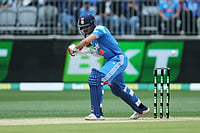It is well understood that malnutrition is a multifactorial problem demanding complex multisectoral interventions, specially from the sectors of health, women and child development, water and sanitation - at a proximate level, and agriculture, livelihoods, education and general development at more distal. However, one specific factor that has been poorly understood and demonstrated, is the concurrence and relationship between malaria and malnutrition, especially in malaria endemic areas.
Southeast Asia contributes 2.5 million cases to the global malaria burden, and India contributes 4% to the global burden.
While there is hardly any published evidence on the connection between malaria and malnutrition from India, it is largely accepted that malaria can give rise to adverse outcomes in pregnancy, such as low birth weight, perhaps through the pathway of maternal anemia. Low birth weight, in turn, is well understood to be a cornerstone of malnutrition with adverse impact throughout the lifecycle of the individual. It is also well accepted that malaria causes anemia in young babies and children; another key target for malnutrition interventions. Research shows that malaria causes a greater severity of disease as well as anemia in pregnant women.
Globally, 125 million pregnancies around the world are at risk from malaria every year with a large number being contributed by India. In one study of the burden of malaria in pregnancy in Madhya Pradesh and Chhattisgarh, the estimated annual incidence during pregnancy in 2009 was in excess of 220,000 infections; 76,000 abortions; 19,800 stillbirths; and 1,000 maternal deaths. In another study in 2010, the prevalence of malaria among pregnant women in east India was approximately 2-3%.
Malaria interventions recommended by the national strategy have taken this partly into consideration by strategizing specifically for malaria in pregnancy through provision of additional insecticide-treated bed nets for pregnant women. However, there is not much focus on young children under the age of 6 years though children in tribal schools and hostels are specifically mentioned. Also, incorporating malaria screening in endemic areas has not yet been accommodated as an element in antenatal care.
India, while bearing the greatest burden of malaria morbidity and mortality in the world, has also been a forerunner in its public health action against it and this is beginning to bear fruit. Within the overall improvements in the country, Odisha has occupied a special place by dint of some innovations that have resulted in a dramatic reduction of malaria incidence and prevalence. India reported a 24% decline in malaria incidence between 2016 and 2017 and over 80% of this reduction was contributed by the state of Odisha, which earlier contributed 40% of India’s total malaria burden.
The bottom-line for this innovation has been mass screening of the entire population in affected areas; symptomatic or asymptomatic, and treatment of all cases found along with universal distribution of LLINs or Long-Lasting Insecticidal Nets - a mosquito net impregnated with insecticide. This programme, titled Durgama Anchalare Malaria Nirakaran, uses the platform of three camps a year for mass screening of the entire population at risk, with specific mention of pregnant and lactating women and children under the age of six years. Through this, 17 high burden districts have been covered fully and 3 districts covered partially. LLIN have been distributed to over 11 million people along with intensified treatment and routine malaria interventions such as insecticide spraying.
With both malaria and malnutrition affecting the same pockets of the country; namely tribal areas, more than others, practitioners slowly started to see some patterns emerge that have been critical in the strategies to combat malaria and might prove as important to tackle malnutrition, specially in malaria endemic areas of Odisha, Jharkhand, Chhattisgarh, Madhya Pradesh, Maharashtra and the North-East.
In our practice of running programmes for community-based management of malnutrition, we have found that the link between malaria and malnutrition appears significant. We have attempted to combine learnings from malaria to our malnutrition protocols in such a way that they adhere to national guidelines and yet provide an additional focus to the factor of malaria.
In one such programme, the Mitra Community Health team hosted by the Christian Hospital, Bissam Cuttack, worked in 50 villages, over and above the existing Integrated Child Development Services (ICDS) programme to undertake interventions through the so-called “Mal-Mal” (malaria–malnutrition) camps. In these camps, active screening and treatment of Malaria was done for all children under 5 years, once annually during the malaria season. Additionally, their growth was monitored and chloroquine prophyllaxis was provided for children who were nutritionally at risk.
Though this was not evaluated, programme data suggested that mean weight gains in the intervention phase were more than ten times higher as compared with pre-intervention phases (325 gms versus 29gms).
In another programme being conducted by Public Health Resource Network (PHRN) with the support of Azim Premji Philanthropic Initiative and the Government of Odisha, a community-based nutrition programme is being run in 5 tribal districts of Southern Odisha. This programme comprises of community-run crèche centres for children under the age of three years who are most prone to malnutrition. It allows for overall care and development with a special focus on prevention and management of malnutrition through locally available resources. The programme follows certain protocols and Standard Operation Procedures which have also taken malaria into account as a specific determinant of malnutrition in this age group.
Thus, if a child shows significant growth faltering (s)he must be investigated for malaria, and treated if found positive. All severely wasted children in our programme must be similarly investigated and treated. The various signs and symptoms of malaria (febrile and non-febrile) have been included in the list of red-flag alerts so that any child displaying them is investigated immediately. Malaria also forms a part of the participatory learning and action modules that are to be transacted in the villages with women’s groups.
However, case studies like the one below reinforce the challenges of managing these children effectively once malnutrition and malaria have set in.
Case of Basant Majhi, Badatikiraguda, Thuamal Rampur, Kalahandi
This child was admitted in the village crèche at the age of 35 months (nearly 3 years) in October 17 with severe underweight -- weighing 8.56 Kg at admission (Z scores of Weight for Age -4.09, Height for Age -2.7 and Weight for Height -2.58). He was being mostly breastfed and not found to be very active.
After admission there was a slow increase in his intake of solids and some increase in activity but anthropometric growth was not very convincing.
After counseling the family, the child was taken to the Primary Health Care on 10th June 2018 where he was diagnosed with malaria and anemia (hemoglobin 6.0). He was treated for malaria but no iron was given. Family was advised to admit the child in hospital but they refused.
On PHRN Public Health Resource Network) intervention the child again visited the health facility on 3rd July 2018 and was again diagnosed with malaria and hemoglobin at 8.0. Treated with malaria medication along with iron syrup.
Since then the child has not visited the health facility. His mother was pregnant and was not able to travel much.
During the whole period the child has been on special nutrition care. Currently he is 9.9 Kg and his Weight For Age is only slightly better at -3.98.
- The clear recommendations from our experience are that, in endemic areas: Malaria screening and management needs to be incorporated specifically in routine antenatal care.
- Malaria screening and management needs to be incorporated specifically in the management of children with severe malnutrition of any type.
- Specific screening needs to be done for all children under the age of five years in endemic areas.
- The need for universal chemoprophylaxis in endemic areas needs to be examined by rigorous research.
It is high time that the relationship between malaria and malnutrition is taken seriously to have greater impact upon both grave conditions and save the suffering and lives of thousands of most vulnerable people.
(Dr Vandana Prasad (MBBS, MRCP-Ped, MPH), is National Convenor, Public Health Resource Network. This article acknowledges the inputs made by resource persons Dr Madan Pradan, Dr John K. Oomen and Dr Sanghamitra Pati during a seminar organized by PHRN on Malaria and Malnutrition in Bhubhaneswar on 21st Jan 2019.)





















